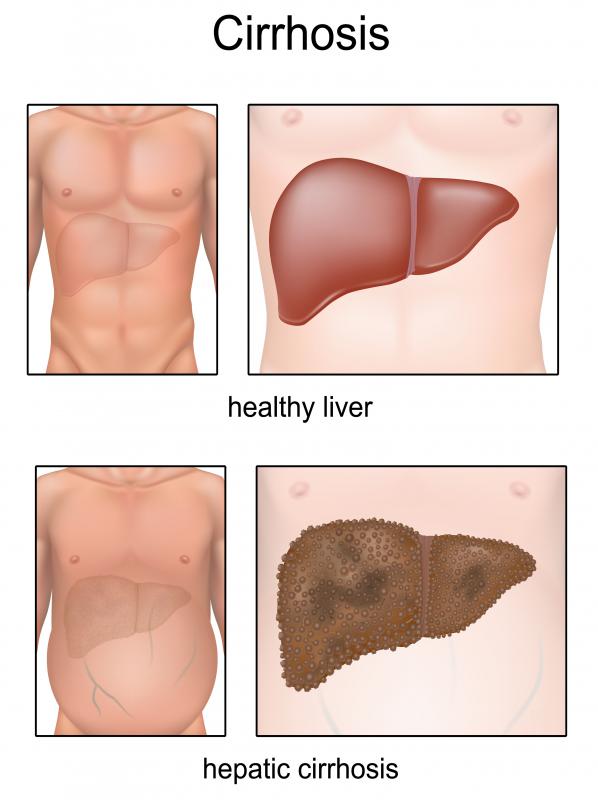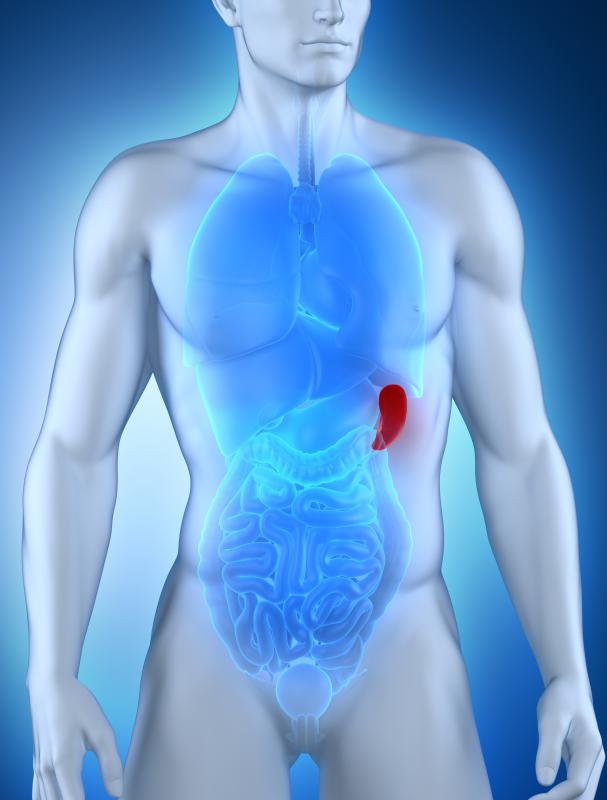At WiseGEEK, we're committed to delivering accurate, trustworthy information. Our expert-authored content is rigorously fact-checked and sourced from credible authorities. Discover how we uphold the highest standards in providing you with reliable knowledge.
What is Primary Biliary Cirrhosis?
Primary biliary cirrhosis is an autoimmune liver disease characterized by the slow degeneration of the bile canaliculi, small tubes that collect bile, in the liver. As the disease progresses, it results in cholestasis, in which bile in the liver is unable to flow out into the duodenum, the first portion of the small intestine, and bile builds up in the liver. The excess bile damages liver tissue, leading to cirrhosis, or the replacement of healthy liver tissue with scar tissue and fibrous tissue.
Primary biliary cirrhosis affects about one in every three to four thousand people, with women affected about nine times more than men. There is a genetic predisposition, but the genetic basis of the disease is not fully understood. It is believed to be an autoimmune disorder, caused by the body's immune system pathologically attacking enzymes normally produced by the liver, but the mechanism is not fully understood either. Risk factors for the disease have not been identified, and there is no known cure. There is a possible link between primary biliary cirrhosis and gluten sensitivity, and the disease often cooccurs with other immune disorders such as rheumatoid arthritis or Sjögren's syndrome.

Symptoms of primary biliary cirrhosis include jaundice or yellowing of the skin and eyes, fatigue, pruritis or itchy skin, and xanthoma or cholesterol deposits in the skin. As cirrhosis sets in, complications include ascites or fluid retention in the abdomen, dilated veins and bleeding in the esophagus, and splenomegaly or enlargement of the spleen. Hepatic encephalopathy, in which the patient experiences disorientation, irritability, coordination disturbances, amnesia, and possibly seizure and coma as a result of liver failure, can appear in severe cases. Primary biliary cirrhosis can be diagnosed through blood tests which check for signs of decreased liver function and certain antibodies, as well as through ultrasound, which can rule out bile duct blockage as a cause of cholestasis. Biopsy determines the stage of the disease.

There are four possible stages of primary biliary cirrhosis. In stage 1, Portal Stage, there is some inflammation of the hepatic portal vein, some bile duct damage, and often immune activity. Stage 2, Periportal stage, is characterized by inflammation and fibrosis, or fibrous tissue growth, around the hepatic portal vein. In stage 3, or Septal Stage, there is extensive fibrous tissue growth, and stage 4, Biliary Cirrhosis, is characterized by the presence of nodules, regenerative lumps that grow at the site of damaged tissue.

While there is no cure for primary biliary cirrhosis, medication such as Ursodiol can help slow the progression of the disease by reducing bile buildup in the liver. Cholestyramine addressed pruritis by helping the body to eliminate bile acids so they do not reenter the bloodstream. Patients with primary biliary cirrhosis are advised to take multivitamins and calcium supplements and to refrain from alcohol.
AS FEATURED ON:
AS FEATURED ON:

















Discuss this Article
Post your comments